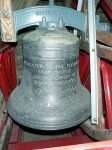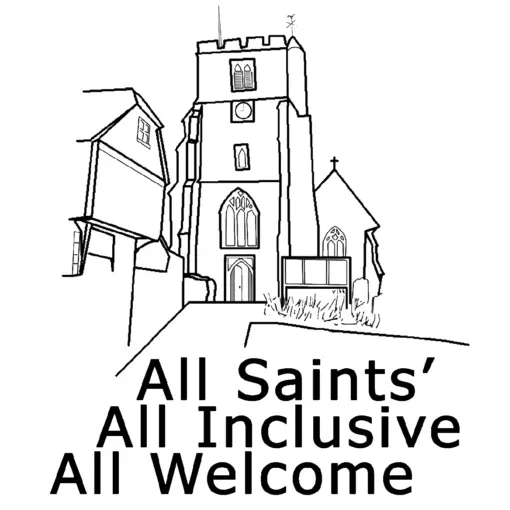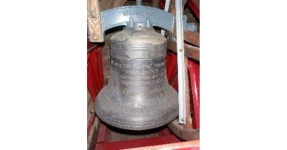
Bellringers Article May 2022
Bellringers Article May 2022
Happy St Dunstan’s Day!
By Rebecca Steele
The 19th of May is a special day for Bell Ringers, for it is the feast day of Saint Dunstan, patron saint of bell ringing!
It is thought that Saint Dunstan was born in the village of Baltonsborough in Somerset, a few miles to the south of Glastonbury, in the year 909 or 910. His father was a Wessex nobleman and his uncle, Athelm, was the Archbishop of Canterbury. After being educated at Glastonbury Abbey, Dunstan joined his uncle at the royal court of King Athelstan. Dunstan returned to Glastonbury and took holy orders in the year 943, when he developed a skin disease which he feared might be leprosy. At Glastonbury, Dunstan showed great skill in the art of metalworking, casting bells and crafting vessels for the church.
Dunstan did not remain at Glastonbury for long, as he was called back to the royal court, into service as a priest. He acted as a royal advisor and negotiator for King Edmund and his successor Eadred, helping to establish a period of peace from Danish attacks. He rose in importance, being made Abbott of Glastonbury, Bishop of Worcester, Bishop of London and eventually Archbishop of Canterbury.
Dunstan’s success in metalworking and casting bells endeared him to bell ringers. He is buried on the right-hand side of the High Altar in Canterbury Cathedral. His tomb was a popular place of pilgrimage throughout the Middle Ages. Dunstan was canonised in 1029 and, until Thomas Becket’s death in 1170, Saint Dunstan was the most popular English saint.
While St Dunstan did much to support bell ringing in churches across England, ringing was an important part of the Christian religion long before his birth. It was an old belief that evil spirits were afraid of bells and fled from the sound of them. There are reports that, in Roman times, bronze bells were used to repel demons and herdsmen attached bells to the necks of their flocks to keep away evil spirits and wild beasts. The poet Ovid wrote that people beat bronze vessels during an eclipse and at the death of a friend to scare away demons. Bells were rung to dispel storms, quench fires, ward off human enemies, and even to stop disease. One of the reasons that the houses of medieval towns were built close up around the church was to place its occupants and property under the protective sound of the bells.
In modern times, church bells ring at Easter and at Christmas; they ring for celebration and mourning, for weddings, funerals and coronations. On Sunday mornings, the church bells remind people who aren’t there that the church is. Jeremy Pratt, head bell-ringer at Westminster Abbey, once said that church bells “are the loudest and most public, outward-facing voice of the Christian Church. When people hear them, they know something is happening.”
It might also be worth remembering that, with the Ringers working hard and the church bells driving away demons, it is less likely that evil spirits will trouble the residents of Staplehurst!
If, after learning a little about Saint Dunstan, you now want to find out some more about bell ringing, then Staplehurst Bell Ringers practise on Tuesday evenings from 7:30 pm until 9:15 pm. Please do contact us and maybe come along to find out a little more.
Keep up to date with our news on both Facebook and Instagram through the links below:
www.facebook.com/StaplehurstBellRingers
www.instagram.com/StaplehurstBellRingers
Rebecca Steele

